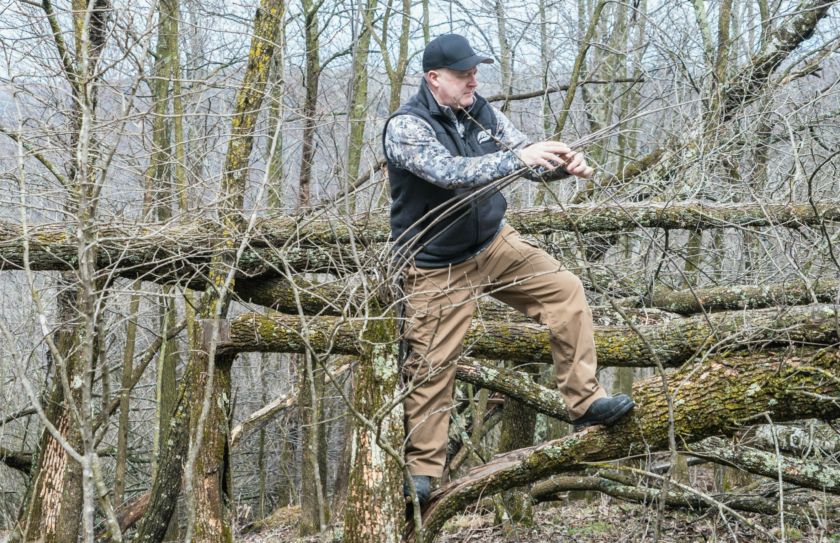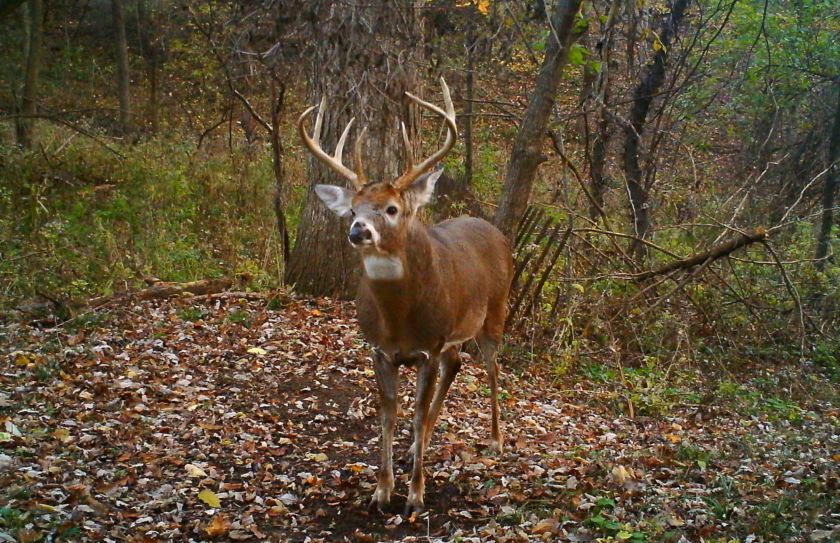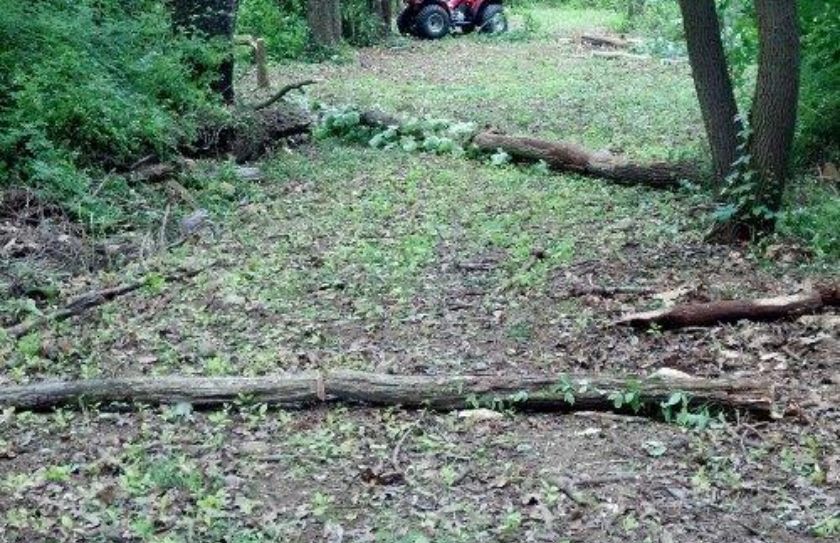*Make sure to check out our latest chainsawed habitat improvement in the video above, which was created by our WHS team, including Ross Fernandez, from WHS Turnkey Habitat and Whitetail Services.
As much as any other tool, the use of a saw for creating incredible bowhunting setups for mature bucks, is hard to beat! While no whitetail parcel is complete without a high quality food source, rarely is a parcel complete without at least, a little chainsaw work. However, not all chainsaw work is created equal, in particular when it comes to whitetail habitat improvements designed to mimic preferred mature buck movements.
Creating High Quality Mature Buck Bowhunting Setups
While a high quality food source (food plots, orchards, oak flat) should anchor afternoon deer movements for preferrably the entire hunting season, high quality woody browse within the habitat should anchor the daytime holding cover. A chainsaw is often the perfect fit to not only create enough daytime browse for deer to live on the land, but to setup your favorite bowstand as well. However, the "setup" takes place by creating movement, and mature buck movement is setup by creating highly defined high quality improvements that are matched with the natural lay of the land. One of the best ways to create highly defined buck movements within range of your bowstand, is by creating chainsawed travel corridors.
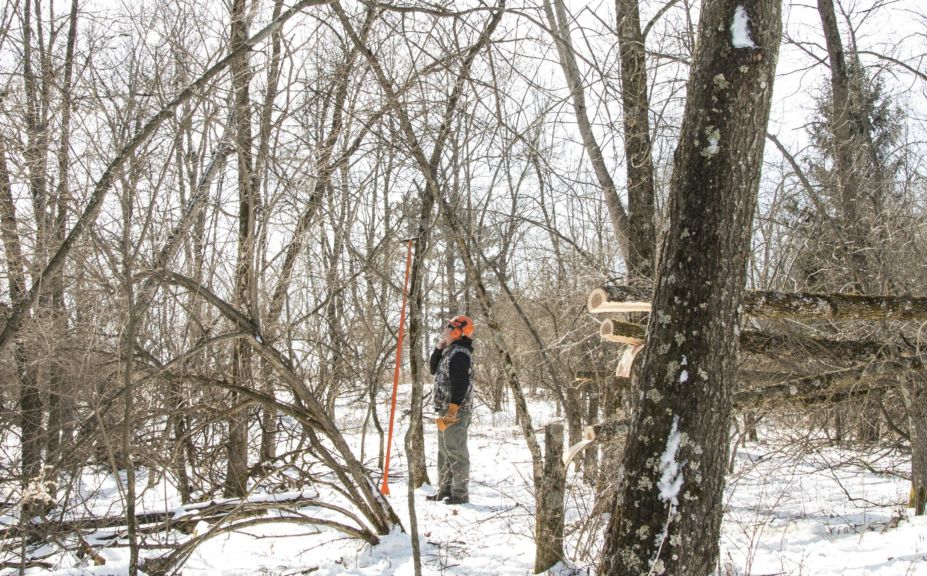
*Want to add food, cover and highly defined buck cruising cover all at the same time? Consider creating Chainsaw Travel Corridors For Whitetails.
Travel Corridors For Attracting Mature Buck Movements
Whether you are creating bedding areas or travel corridors, deer need side cover, food and safety. As a general rule, if you can barely fit an ATV through your newly created deer corridor, your deer trail is about the right size. If you have to squeeze, crawl and climb thru the corridor it is too narrow - so keep cutting. Also, your cuttings should not fall parallel to your defined travel routes, because in my experience deer avoid areas where they may feel caged in and trapped. Instead, the majority of your hinge-cuttings should point perpendicular to your intended line of deer movement.
In both deer travel corridors and deer bedding areas, hing-cutting above the height of your belly, should typically be avoided. For starters if a chain lets loos on your saw, you can easily wrap it around your head and neck for an extremely serious injury. But when it comes to creating deer cover, hinge cuts should be at body-height for a deer. This allows deer to more hidden from you as well as each other, and also places food at right height for deer to take advantage of. Many online hinge-cutting demonstrations create cuts well above a deer's browsing reach, resulting in a waste of much needed daytime browsing opportunity, as well has sufficient side cover.
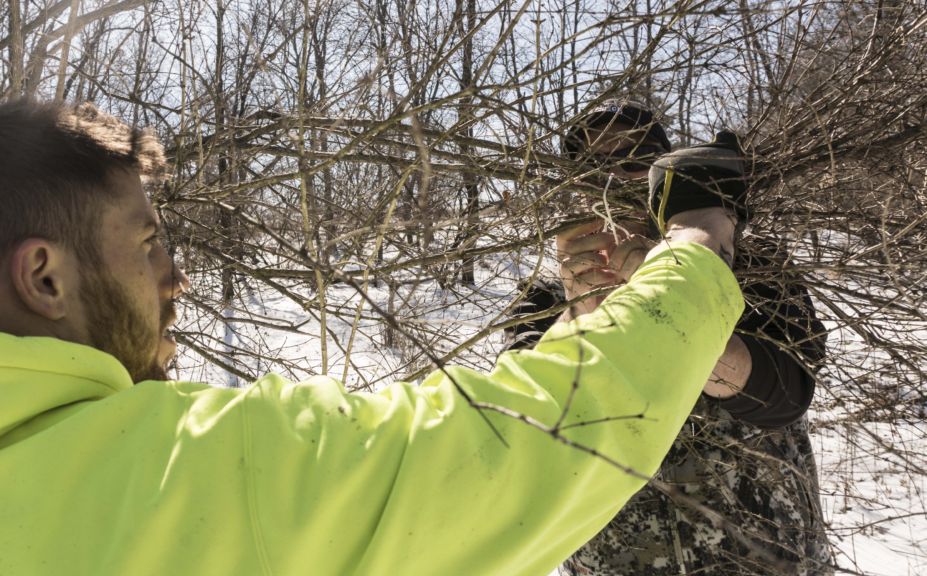
*Tying small sapplings and brush together to create effective travel corridors for deer can be accomplished in high regen settings. However, often tying a few trees together is just not enough. For the full hoop corridor strategy, check out Hoop Corridors For Deer
An Entire System of Mature Buck Stand Setups
The entire system shown in the video, created five, 50 yards travel corridors converging into one location, flanked by a 1/2 acre bedding area complimented by another few acres of natural bedding cover. Although only 1 acre in total cutting size and less than 3 hours of work, the location has already accounted for 3 mature buck harvests averaging over 5 years of age, prior to our latest hour of cutting. A total of 4 bowstands take direct advantage of the chainsaw work, with each being located within 100 yards or less of the cuttings. If I am going to take the time to design a high quality, defined buck movement creation, the work needs to be valued enough to support at least 2-3 stand locations, and potentially more.
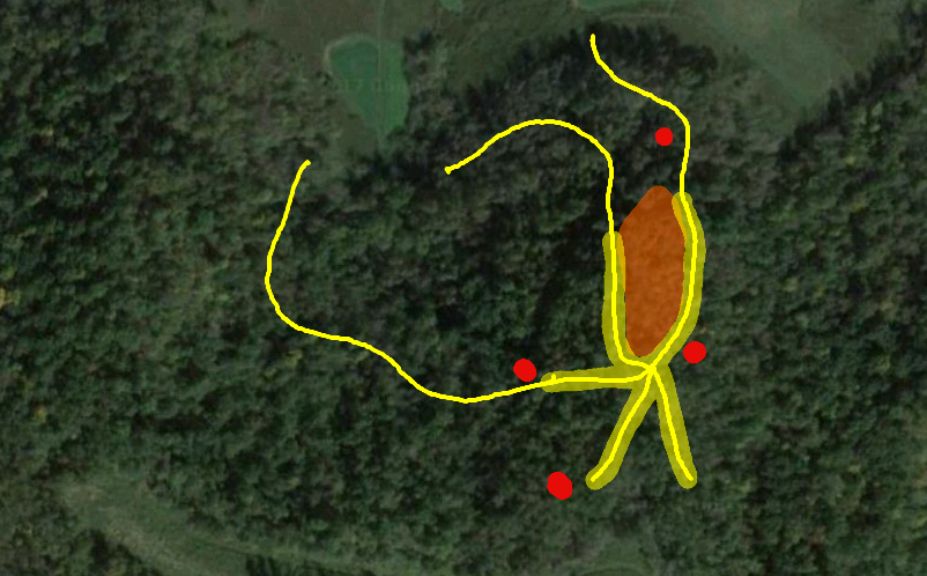
*Rarely does 1 bowstand in a great location, cut it. Instead if a location -or cutting- warrants 1 stand location, it most likely warrants at least 2-3. Why? Check out our blog and video combo, Combination Treestand Setups(Red - Stand Locations, Orange - Bedding Area, Yellow - Travel Corridor)
Conclusion
Just like any tool, one can use a chainsaw too much, even though it may be such a critical addition to your land. The key is to define the level of quality on your land so much, in such precise locations, that deer know exactly where they are safe, have food and can easily move within while hidden. If you can easily walk through your new chain-sawed travel corridor (or bedding area) with hinge-cuts that are low enough to allow browsing opportunity, while being completely hidden by side cover in the form of logs, tops and hardwood regen - then you are on the right track!
